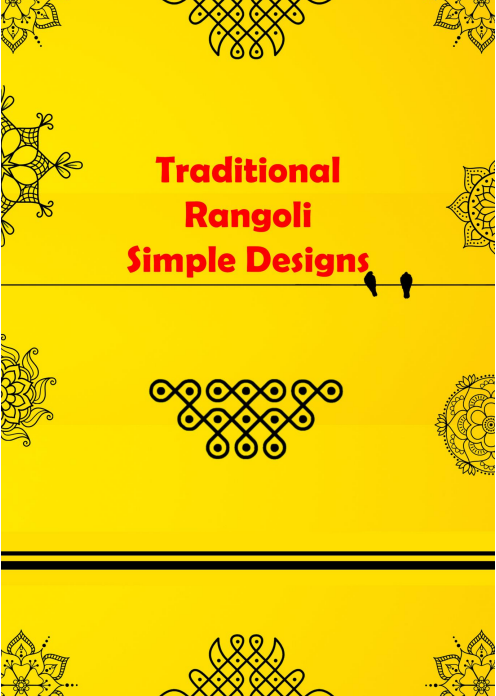Kolam, also known as Rangoli or Muggu, is a traditional art form that holds a significant place in South Indian culture, particularly in Tamil Nadu, Karnataka, Andhra Pradesh, and Kerala. Kolam is created by using rice flour, chalk, or rock powder to make intricate designs on the ground, typically in front of homes or in courtyards. This ancient art form is not just about decoration; it carries deep cultural and spiritual significance, embodying values of hospitality, harmony, and beauty.
Download free Kolam design pdf
Download free Kolam design pdf
The above pdf contains dotted muggulu, kolam or rangoli designs for beginners as well as experts of different dot configurations like 3x3 , 5x1, 5x5, 7x1, 11x6, 9x1, 7x4, 12x2, 16x2, 12x4, 20x2, 15x1.
One of the most striking aspects of kolam is its ephemeral nature. Every morning, women in South Indian households meticulously create new kolam designs, often before sunrise. These designs can range from simple geometric patterns to more complex motifs inspired by nature, such as flowers, peacocks, and animals. The process of creating kolam is a meditative practice, with each stroke and curve made with care and attention, reflecting the creator's artistic skill and creativity.
Beyond its aesthetic appeal, kolam plays a vital role in social and cultural life. It is a form of expression and communication, conveying messages of welcome, celebration, and auspiciousness. During festivals and special occasions, kolam adorns the entrances of homes, inviting prosperity and good fortune. It is also a way to honor the environment and the creatures that inhabit it, as many kolam designs are inspired by the natural world.
Moreover, kolam serves as a form of community bonding. Women often gather in groups to create kolam, exchanging ideas and techniques. It is a way to pass down traditional knowledge from one generation to the next, ensuring that this rich cultural heritage is preserved and celebrated.
In addition to its cultural significance, kolam has practical benefits as well. It is believed to have a soothing effect on the mind, reducing stress and anxiety. The materials used in kolam, such as rice flour, also have a beneficial impact on the environment, as they are biodegradable and eco-friendly.
In conclusion, kolam is much more than just a form of art; it is a living tradition that embodies the values and beliefs of South Indian culture. Its beauty lies not only in its visual appeal but also in the spirit of creativity, community, and mindfulness that it embodies. As we celebrate and appreciate the art of kolam, we also honor the rich cultural heritage and traditions that have been passed down through generations.
Here are some interesting facts about kolam:
1. **Ancient Origins**: Kolam is believed to have originated over 2,500 years ago in the Tamil Nadu region of India. It has since become a prominent cultural practice in South India.
2. **Symbolic Meanings**: Kolam is not just decorative; it is also symbolic. The patterns often represent auspicious symbols, deities, and geometric shapes that are believed to bring prosperity and ward off evil spirits.
3. **Different Names**: While it is commonly known as kolam in Tamil Nadu, it is called Rangoli in North India, Alpana in West Bengal, and Aripana in Bihar.
4. **Eco-Friendly**: Traditionally, kolam is made using rice flour, which is not only biodegradable but also acts as food for ants and other small creatures, symbolizing a respect for all living beings.
5. **Mathematical Precision**: Some kolam designs are based on mathematical concepts such as symmetry, fractals, and tessellations, showcasing the intersection of art and mathematics.
6. **Therapeutic Benefits**: The process of creating kolam is believed to have therapeutic benefits, promoting mindfulness, focus, and relaxation.
7. **Seasonal Variations**: Different regions and communities have their own variations of kolam, with designs often reflecting the seasons, festivals, and cultural motifs specific to that area.
8. **Community Bonding**: Creating kolam is often a communal activity, with women coming together to create elaborate designs, share techniques, and socialize.
9. **Contemporary Adaptations**: While traditional kolam is created using rice flour, modern versions may use colored powders, flowers, and even colored sand to create vibrant and intricate designs.
10. **Global Recognition**: Kolam has gained recognition beyond India, with artists and enthusiasts around the world appreciating its beauty and cultural significance.

Comments
Post a Comment